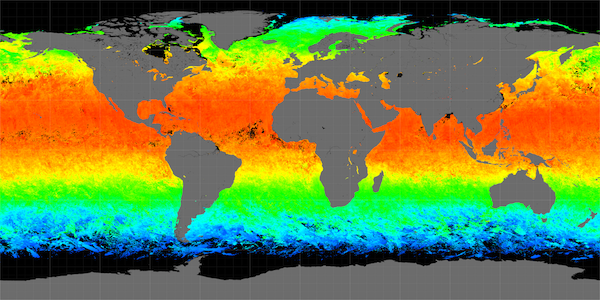This algorithm returns instantaneous photosynthetically active radiation (iPAR) in Einstein m-2 s-1. The iPAR product represents the total PAR incident on the ocean surface at the time of the satellite observation (the PAR product, in contrast, provides a daily average). This is a companion product to the normalized fluorescence line height algorithm, the combination of which can be used to estimate fluroescence quantum yield (Behrenfeld et al. 2009).
MODIS only.


Algorithm Point of Contact: Bryan Franz, NASA Goddard Space Flight Center
iPAR is defined as:
$ iPAR = \frac{\mathrm{1} }{\mathrm{hc}} \intop\nolimits_{400}^{700} \lambda E_d(\lambda , 0-)d\lambda $
...where h is Planck's constant, c is the speed of light, and Ed ($ \lambda $,0-) is spectral downwelling irradiance just below the sea surface. Ed ($ \lambda $,0-) is derived by attenuating extraterrestrial solar irradiance at each sensor wavelength through the atmosphere using the derived atmospheric correction model. The iPAR product is reported just above the ocean surface and does not account for transmission losses through the interface.
Click ipar.c to view source code.
- l2prod = ipar
Satellite-to-in situ validation results are available from the SeaWiFS Bio-Optical Archive and Storage System (SeaBASS):
Behrenfeld, M. J., Westberry, T. K., Boss, E. S., et al. (2009). Satellite-detected fluorescence reveals global physiology of ocean phytoplankton. Biogeosciences 6, 779-795. http://dx.doi.org/10.5194/bg-6-779-2009
Carder, K. L, Chen, F. R., & Hawes, S. K. (2003). MODIS Ocean Science Team Algorithm Theoretical Basis Document 20: Instantaneous Photosynthetically Available Radiation and Absorbed Radiation by Phytoplankon.